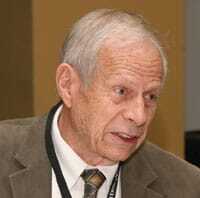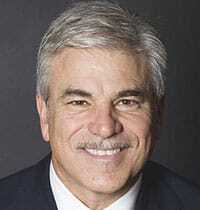This is an excerpt from Professional Real Estate Development: The ULI Guide to the Business, 3rd Edition, by Richard B. Peiser and David Hamilton, scheduled for publication in June. The comments are drawn from interviews conducted by Peiser, the Michael D. Spear Professor of Real Estate Development at the Harvard Graduate School of Design in Cambridge, Massachusetts.
The experts interviewed include Jim Chaffin, chair, Chaffin/Light Associates, Okatie, South Carolina; Robert Engstrom, president, Robert Engstrom Companies, Minneapolis; Mike Fascitelli, president, Vornado Realty Trust, New York City; Gerald D. Hines, founder and chair, the Hines real estate organization, Houston; Jeremy Newsum, executive trustee, the Grosvenor Estates, London; Ron Terwilliger, chairman emeritus, Trammell Crow Residential, and chair, Enterprise Community Partners, Atlanta and New York City; and Lynn Thurber, chair, LaSalle Investment Management, Chicago.
They discuss ways to survive the inevitable industry down cycles, including the recent Great Recession; how to get in front of major demographic trends; how to raise money for projects in difficult times; how to think about guarantees, leverage, and cash flow; and why even famous developers sometimes run into difficulties.
Lessons from the Great Recession
Ron Terwilliger:
Ron Terwilliger
“Each cycle is different. You won’t see it coming and you won’t know the depth or duration. You must operate your business with that knowledge. It will affect your ability to access capital and it will affect demand. I learned this time that . . . while you seem to have alignment with [your investor partners] on the up cycle, you may not on the down cycle. I closed on some land with financial partners alongside us. They just walked away from their investment. Land values fell by half or even more severely. I learned from a merchant builder’s standpoint, you should not acquire land with debt. If you can’t buy it with equity, you should wait to buy until you are ready to build on it.”
Lynn Thurber: “The notion that ‘all ships rise with a rising tide’ is no longer true. During the expansion, there was such a flood of capital on both the debt and equity side that secondary locations and asset quality were not differentiated among risk takers and in pricing. Today, both debt and equity investors are far more selective.” This observation implies that regeneration of areas will take longer to implement. “Capital will first go to the best locations and best properties and properties that have the best renovation potential. It will be much harder for properties on the fringe.”
Gerald Hines:
Lynn Thurber
“Your liquidity needs to be more in bonds and less in stocks, and [you need to] have other forms of liquidity. You don’t want both real estate and your other assets to drop at the same speed and magnitude.” Noting that real estate values can go down by as much as half, he observes, “If the building is slightly off location, it will have a much bigger drop in value than one with a better location. Risk in marginal buildings is very, very high. They will be rented during a shortage, but not in a down market because there are too many other better buildings.”
Jeremy Newsum: “The things that went wrong were utterly predictable. Timing is harder to predict, but that is no excuse.”
Chaffin: “Most of what we know about our business has more to do with humility than intelligence, but we reserve the right to get smarter as we go along.”
Trends and Changing Expectations
Thurber:
Gerald Hines
“Demographics will impact geography and preferences in ways people my age can’t figure out. In difficult economic times, people must be more flexible about where they will live and how they will work. This will impact where real estate markets recover first.”
Chaffin distinguishes between demographics, which has to do with income, age, and geography, and psychometrics, which has to do with psychological changes that affect the market. For second-home communities, he sees a trend back toward smaller homes with less conspicuous consumption. People want smaller homes near their grandchildren. They also want a sense of belonging. College towns, for example, will be more and more popular because they offer stimulation and opportunities to be connected to a community.
Return to the City
Bob Engstrom says smaller homes and smaller lots will be more in demand—1,200-square-foot (111 sq m) foundations with room for expansion. The ambience of mixed use in a walkable neighborhood appeals to younger and older people alike.
| Bob Engstrom |
Thurber predicts, however, that today’s younger generation that grew up in the suburbs will return there to raise their children because they will want them to have a similar experience.
Terwilliger predicts that the return to the city will take place primarily in inner-ring suburbs. “There will be more suburban cores redeveloped to provide a walkable environment for shopping, restaurants, and entertainment. An increasing segment of the population will look for a more holistic environment where they have more walking and commuting options.”
Green Development
Hines says green building has always been a keystone of his company. “It made sense because you could operate for less.”
Thurber: “Green buildings are no longer considered a fad. They are a very important part of our future. Those technologies are improving rapidly and are a part of all decision-making processes for investing and developing. . . . Companies [that stay] on top of knowledge of what’s available and the cost/benefit trade-off, and companies that are able to collect the data will be more competitive.”
Mike Fascitelli points out that many tenants and governments are forcing landlords to have state-of-the-art facilities and are forcing improvements in older buildings.
| Mike Fascitelli |
Chaffin emphasizes the relationship between sustainability and building a community: “Sustainability gives people a sense of being responsible. People yearn not just for a big home in an exclusive project, but [also for] being part of a community. Whatever you can do to weave social and environmental responsibility into a community, it gives people more reason to be there.”
Financing
Terwilliger: “Get an investor who can ride through the cycles with you. Avoid too much debt. In the latest cycle, Trammell Crow Residential did not borrow more than 75 percent of cost, which helped it survive the down cycle.” Trammell Crow decided to give as much of the ownership away as it had to in order to raise 25 percent equity for each project. Raising equity is always the hardest part for beginning developers. “If you build credibility, you will find the right financial partner—a wealthy family or a successful real estate player who is retired but wants to keep a hand in.” Terwilliger adds that “a reasonable deal is whatever the investor is comfortable to begin with. A lot of young people forget if they are being paid a salary and have no money to put at risk, they can’t expect an investor to give them a whole lot of upside. They should have some upside—around 20 percent. Over time, demonstrate you are capable, leave money in the business, and become an equal partner down the road.”
Thurber predicts that both debt and equity capital will be difficult to obtain over the next few years. “Understanding what those sources are expecting from their partners . . . will be very important. Because there was so much capital available the last few years [before the recession], people did not feel they needed to be good partners with their debt source and equity source. They were confident they could get the capital somewhere. Owner/developers will not be in the driver’s seat over the next few years. Younger developers who commit to being good partners with their sources will do better than those who do not put time and effort into their capital sources.”
Newsum: “One should never guarantee any loan that he or she can’t meet. It is better to share the equity than try to get all the upside and make foolhardy commitments.” He asserts that financiers are being put in the backseat. “They’re not in position to drive the market anymore. True real estate professionals are coming back to the fore. Others are leaving [the field] because return expectations have dropped to something more reasonable. Fundamental gearing levels are falling.”
| Jeremy Newsum |
Fascitelli: “Investors want the stability of cash flow and inflation protection.” He quotes the mantra of Harvard Business School’s Bill Fruhan: “DROOC!—Don’t run out of cash!” He says developers’ balance sheets may not matter during boom times, but today they matter a lot.
Strategy and Building Organizations
Hines: “Strive for an outstanding reputation through the quality of what you build and how you deal with people, and leave a good trail behind.” For building an organization, he says, “Get outstanding people. Give them participation in the success. They also have to have something to lose. They need to have something left in the bank in case they make a bad mistake. We give more equity away to our employees than most developers.”
Chaffin advocates building an organization according to one’s strengths and weaknesses. “If you come out of the accounting or finance side, you must have someone strong on the marketing side. If you come from planning, design, construction, or development, you must have a strong CFO and a strong marketing/salesperson. Later on, add an operations guy.” There are four key areas: marketing and sales, accounting and finance, planning and design, and construction and operations. A firm should reach a certain size before bringing planning and design in house because they are easily contracted.
| Jim Chaffin |
Thurber says the most important things for building an organization are cultural, with integrity and transparency at the top. “If you are honest about what you are committing to and follow through on your promises and willingly share accurate information about what is happening with your employees, service providers, and financial partners, that is hugely important. Those who have failed have not done this.” Also important is to “avoid doing things outside of your core competency. When you go outside of it, you are much more likely to run into significant difficulties. You should add on adjacent to your core competency. Move gradually, but recognize you are taking on great risk and run the risk of damaging your organization.”
Terwilliger observes that Charles Fraser, one of the 20th century’s most innovative developers, “was a visionary and a dreamer who was way ahead of his time in terms of environmental sensitivity. Charles was able to attract a number of very capable young people. He was charismatic, but did not have any risk-management sensitivity. Trammell Crow was a visionary and optimist and very charismatic, but also very generous. He pioneered the partner concept. He always wanted his partners to make a lot of money and do very well. A rising tide raised all boats. His spirit of partnership and generosity are two things I will always remember him for.”












